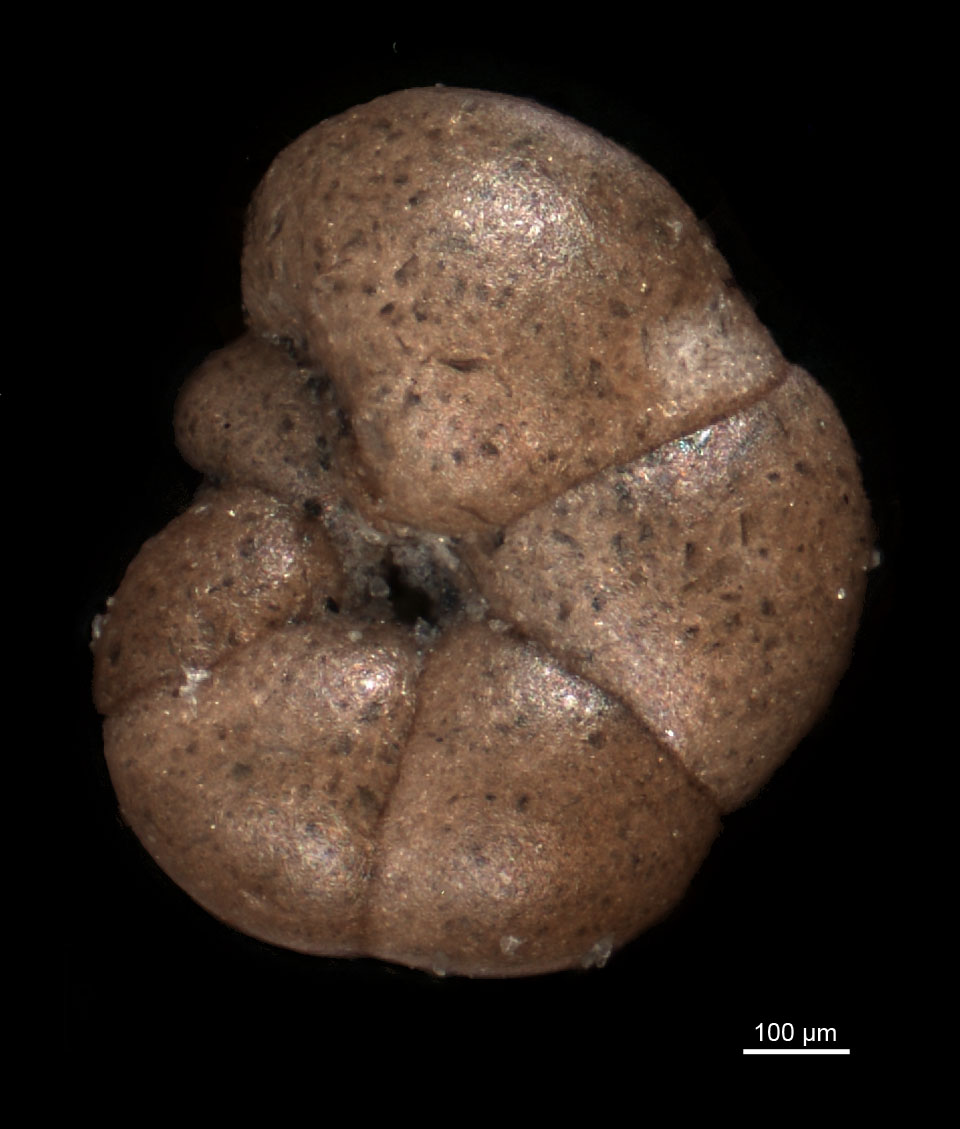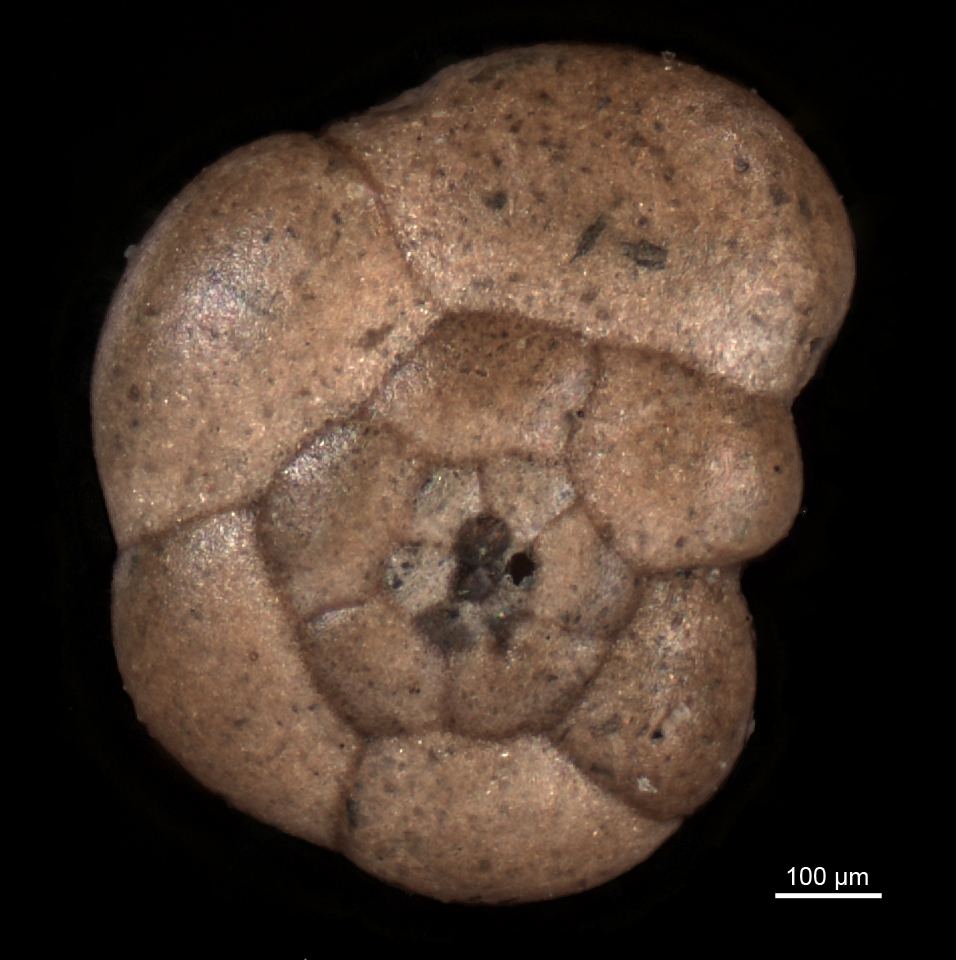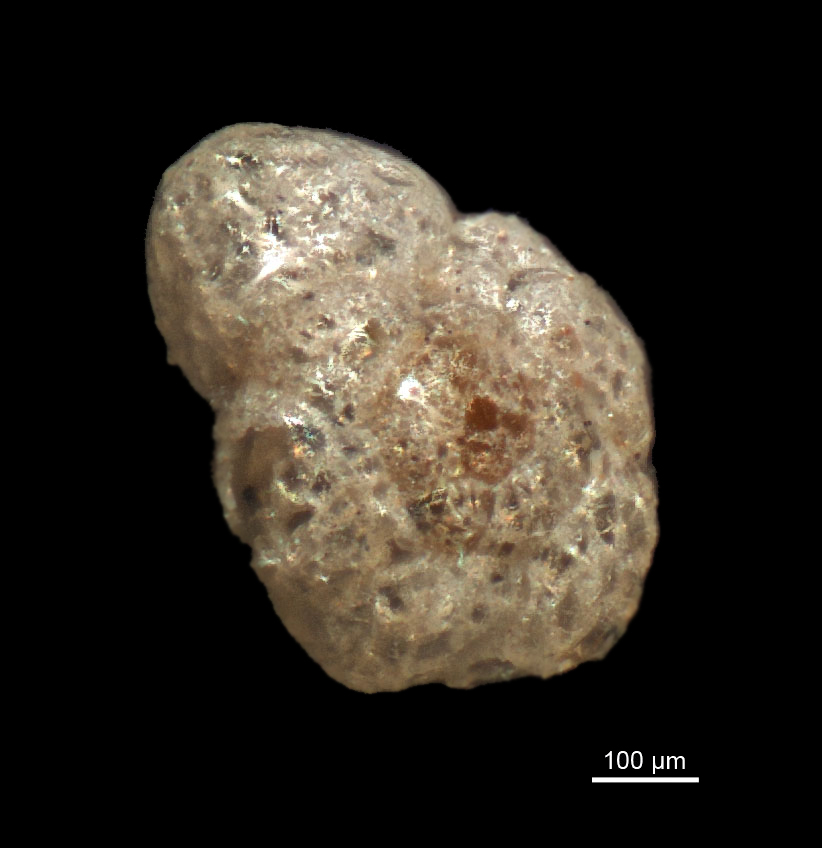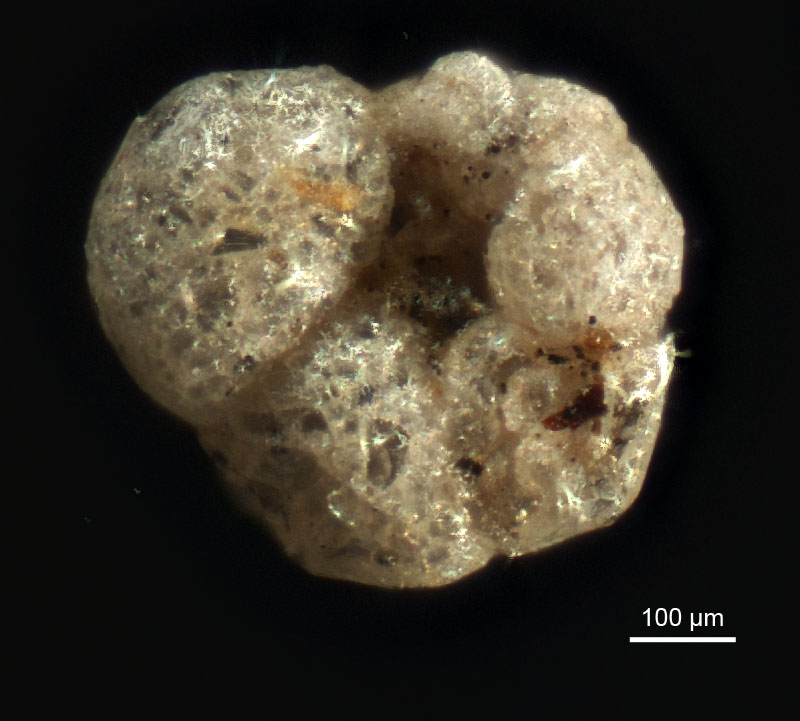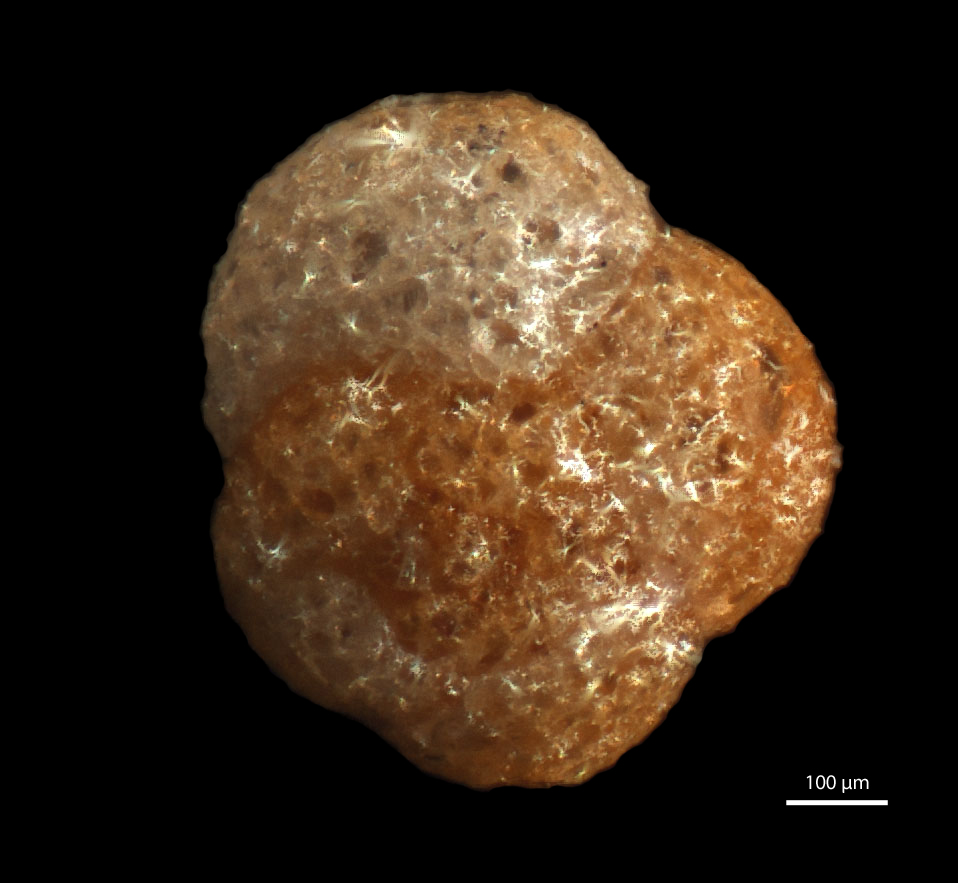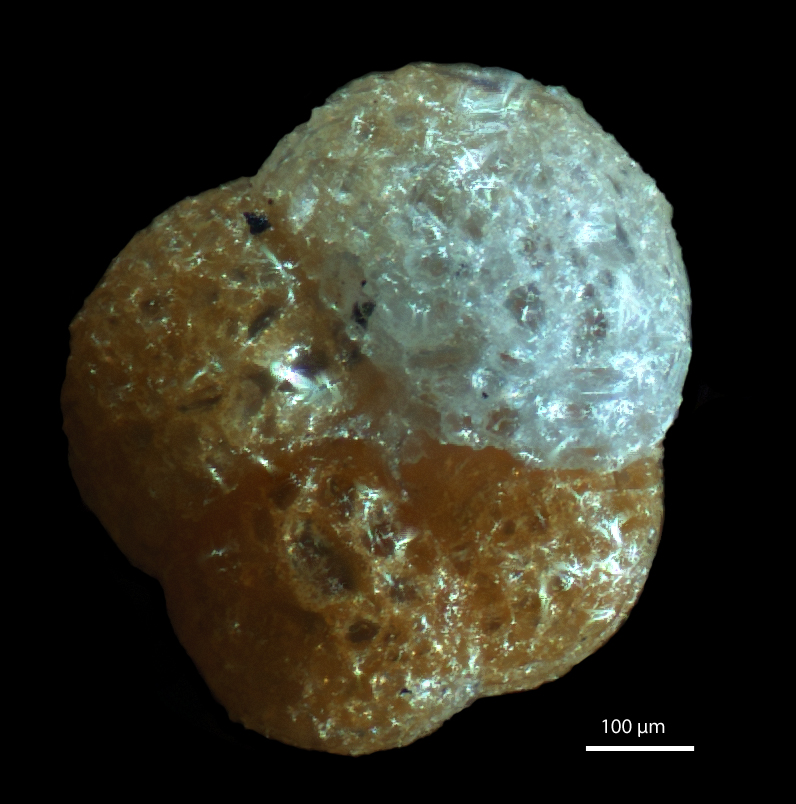Genus – Trochammina
Genus Trochammina Parker and Jones, 1859
Trochammina Parker and Jones, 1859 p. 347; emended Brönnimann and Whittaker, 1983, p. 236.
Description: Test trochospiral, free or attached. Wall agglutinated, single layered imperforate. Chambers subglobular or axially strongly compressed without inner structure. Two sets of apertures: primary opening interiomarginal, umbilical-extraumbilical; secondary or supplementary opening at the tip of the chamber, umbilical sutural, posterior directed.
Emended description: Test free or attached; trochospiral, adult mode of growth pluriserial, wall agglutinated, imperforate; aperture single, interiomarginal, resting with border completely within first chamber of final whorl, asymmetric with respect to axis of enrolment.
Trochammina inflata (Montague, 1808)
Nautilus inflatus Montagu, 1808.
Trochammina inflata (Montagu) Parker and Jones, 1859, p. 347; Phleger, 1954, p. 646, pl. 3, figs. 22, 23; Smith 1973, p.17, pl. 2, fig 10; Patterson, 1990, p. 240, pl. 1 figs. 8-10; Vázquez Riveiros and Patterson, 2008, Figs. 3.2a, b.
Description: Inflated test, trochospiral with chambers increasing in size as added. Spiral side, all chambers visible, sutures depressed and radial to slightly curved. 5-6 chambers in the outer whorl, with a deep umbilicus. Agglutinated wall. Aperture on umbilical side, at the base of the final chamber forming a narrow lip.
Remarks: Trochammina inflata and the variety T. i. macrescens were split into 3 different genera and species, based largely on the apertural features: Trochammina inflata, Jadammina macrescens and Balticammina pseudomacrescens Bronniman, Lutze and Whittaker, 1989. These foraminifera are largely confined to intertidal/marsh environments, and recent studies on changes in relative sea-level (including earthquake events) have used these different species to determine height in the inter- and supratidal of marshes along the Oregon coast (e.g. Gerhels and van de Plassche, 1999; Englehart et al., 2013). In our study of Puget Sound, B. pseudomacrescens has not been recorded because our sampling sites do not include locations of less than 1 m of water depth.
Distribution: T. inflata is not common in the Puget Sound samples collected for this project but is found in restricted waterways such as Possession Sound, Commencement Bay and Bellingham Bay.
Trochammina pacifica Cushman, 1925
Trochammina pacifica Cushman, 1925, p. 39, pl. 6, fig. 3; Cushman and McCulloch, 1939, p. 103, pl. 11, fig. 3; Bandy, 1953, pl.21, figs 7a-c; Lankford and Phleger, 1973, p. 130, pl. 3, fig. 2a, b; Patterson, 1990, p. 240, pl. 1, figs. 5-7; McGann, 2007, p. 64, pl. 9, fig. T; Vázquez Riveiros and Patterson, 2008, figs. 4.5a, b.
Description: Test free, trochospiral; wall coarsely agglutinated, smoothly finished; 2 or 3 whorls, with 4 to 5 chambers in last whorl; chambers extremely inflated; periphery rounded; sutures distinct but only slightly depressed, nearly radial; aperture a narrow slit on ventral side, at base of last-formed chamber.
Distribution: Trochammina pacifica is found primarily in the north and south Sound and is notably abundant in Saratoga Passage.
Trochammina hadai Uchio, 1962
Uchio, 1962, 10, p.243-244, pl.18, figs. 9a-c; Tsujimoto et al., 2006, p. 21, plate 6, fig. 7; McGann, 2012, p. 13, fig. 2.
Description: Test free, trochoid, finely arenaceous, dorsal side convex, ventral one usually flattened, umbilical area rather flat but deeply umbilicate in well preserved specimens, usually covered by fine particles, consisting of from 3 to 4 whorls, all visible from the dorsal side, only the last one from the ventral side; chambers inflated, somewhat subglobose, usually five occasionally four chambers in the last whorl, usually gradually sometimes rapidly increasing in size as added; sutures slightly curved dorsally, more depressed and nearly radial ventrally; aperture an arched slit at the base of the apertural face of the last chamber; wall of sand grains and a variable amount of cement, outer surfaces fairly even, color reddish brown to yellowish brown.
- T. hadai differs from T. pacifica in having much more inflated chambers.

